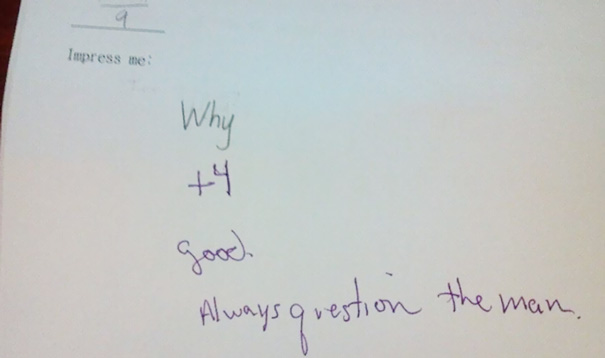Teachers play a crucial role in the learning of students
Anyone that chooses to do so, can develop and enhance effective teacher characteristics in themselves
It is a choice; if you want to be a great teacher, you have to work for it. You must identify what characteristics of effective are and then set about trying to develop them. Here are some effective teaching characteristics identified by Rosenshine and Furst:
- Clarity
- Variability
- Enthusiasm
- Task Oriented/Business-Like Behavior
- Positive Reinforcement
- Student Opportunity to Learn
- Avoided Criticism
- Structuring Comments
- Effective Questioning
- Humor
Clarity
Having clear learning objectives is important for the students as well as for the teacher to both guide and focus the learning process. To teach clearly and effectively, preparation and organized is essential.
Variability
I vividly remember going to a history class in high school and every class period, the teacher would break out the overhead projector and transparencies and he would write notes for 50 minutes and we would copy them down and then the bell would ring and he would erase the transparency and get ready to do it all over again for the next class. That. Was. Brutal. I mean even for him that must have been painful.
Variability is just about mixing it up and keeping it interesting.
Enthusiasm
Enthusiasm is about sharing your passion. I feel that to be an effective teacher you have to be passionate about what you are teaching or it will be very difficult to be sincerely enthusiastic. This is somewhere that I know I need to improve; to show my passion and be animated in my teaching.
Task Oriented/Business-Like Behavior
Being enthusiastic and engaging students is important but empowering students to learn and be passionate about learning, it can't just be a show where the students are entertained and when the bell ring the show is over and learning stops. Demonstrate to the students that what you are teaching is important by being serious about what you teach. Let the students know that you care about them and the knowledge you are imparting to them.
Positive Reinforcement
This is something that I have been reading about lately. As teachers and mentors we should reinforce effort that the students are putting in and not just the results. Check out this article by Esther Cepeda titled, "
Fearing Failure, Children Become Slaves to Our Praise." If we only praise the students in our class for getting an A, then we are not encouraging true effort which is considerably more relevant than a grade. That being said, strive to help students recognize their strengths. It will motivate them to work harder.
Avoiding Criticism
Bottom line: don't focus on weakness, build up strengths. Criticism can be helpful, but you have to be strategic, and have good rapport with the students.
Use of Structuring Comments
This is really interesting to me and something I want to work on developing in my teaching techniques. The "cognitive scaffolding," structuring comments let the learners put pieces together and focus on important concepts that the other material is built upon.
Use of Probing Questions
Asking questions enhances critical thinking. It is easy to unconsciously consume information without asking, "why?"An important piece of advice in this article is to give the students time to actually think about the question, don't expect an answer immediately. The purpose is to think about it!
Use of Humor
I, and I think most people, love to laugh. When someone is funny, I have no problem listening to anything they are talking about. Humor, in my opinion, is probably more difficult to develop than some of the other characteristics already discussed, but a great characteristic for effective teaching and building rapport with students. A word of caution: don't let the humor get out of control and keep it in good taste.
Conclusion
Becoming an effective teacher is possible for anyone, but it takes time and effort. Be patient and diligent. Learn from others and use common sense.



























